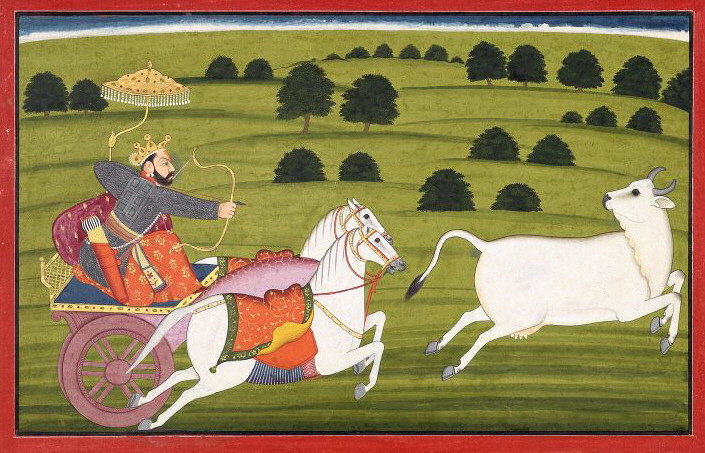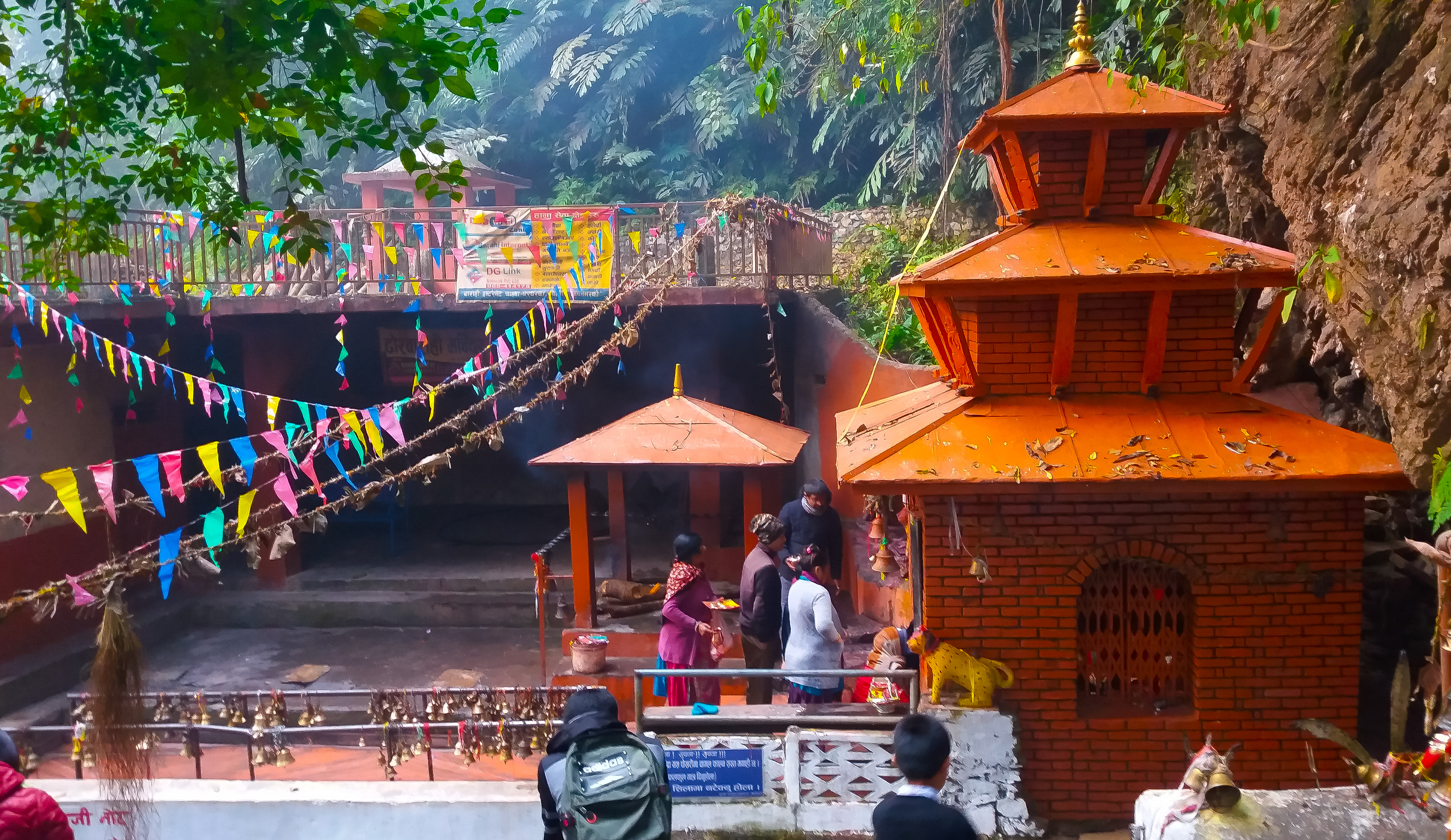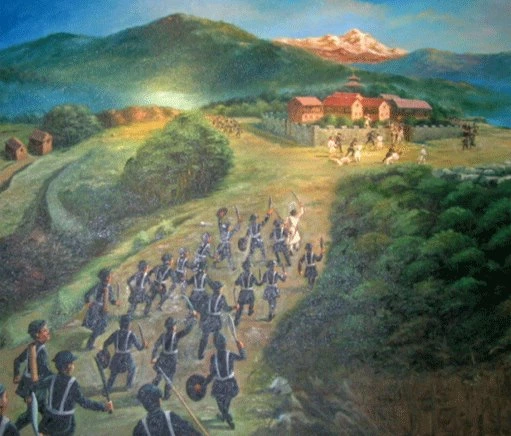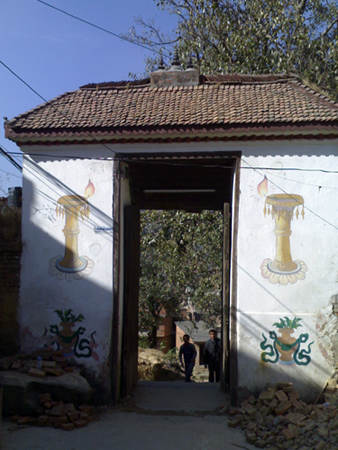|
Chaubisi
Chaubisi Rajya, Chaubise Rajya or Chaubisye Rajya (, ), were sovereign and intermittently allied petty kingdoms ruled by the Thakuri kings located at the intersection of Himalayas and the Indian subcontinent. One of these kingdoms, Gorkha, annexed the others, becoming the present-day country of Nepal. This conquest began soon after Prithvi Narayan Shah ascended to the Gorkha throne in 1743 AD. The Chaubisi Rajya were annexed during the unification of Nepal from 1744 to 1816 AD. A parallel group of 22 small kingdoms, Baisse Rajya (), existed to the west of the Gandaki Basin. The Shah Kingdom was founded by Drabya Shah, the youngest son of Yasho Brahma Shah, king of Kaski and Lamjung, his eldest son became the king of Kaski and Lamjung which created a fight for supremacy. Palpa was one of the biggest and most powerful kingdoms; the rulers were able to create independent kingdoms in Tanahu, Makwanpur and Vijaypur. Many rulers from Nepal wanted to consolidate the principaliti ... [...More Info...] [...Related Items...] OR: [Wikipedia] [Google] [Baidu] |
Kingdom Of Nepal
The Kingdom of Nepal was a Hindu monarchy in South Asia, founded in 1768 through the unification of Nepal, expansion of the Gorkha Kingdom. The kingdom was also known as the Gorkha Empire and was sometimes called History of Asal Hindustan, Asal Hindustan. Founded by Prithvi Narayan Shah, a Gorkha monarch who claimed Thakuri ancestry from the Chaubisi Rajya, chaubisi principalities, the kingdom endured for 240 years under the formal rule of the Shah dynasty, whose authority fluctuated over time. It lasted until 2008, when the monarchy was abolished and the country became the Federal Democratic Republic of Nepal, Federal Democratic Republic. After the invasion of Tibet and plundering of Digarcha by Nepali forces under Bahadur Shah of Nepal, Prince Regent Bahadur Shah in 1792, the 8th Dalai Lama, Dalai Lama and Chinese Ambans reported to the Chinese administration for military support. The Chinese and Tibetan forces under Fuk'anggan attacked Nepal but went for negotiations afte ... [...More Info...] [...Related Items...] OR: [Wikipedia] [Google] [Baidu] |
Prithvi Narayan Shah 1960 (restoration)
Prithvi (Sanskrit: पृथ्वी, ', also पृथिवी, ', "the Vast One", also rendered Pṛthvī Mātā), is the Sanskrit name for the earth, as well as the name of the goddess-personification of it in Hinduism. The goddess Prithvi is an archetypal Mother Goddess, and one of the most important goddesses in the historical Vedic religion. She is depicted as a stable, fertile, and benevolent presence in the Vedas. She is frequently addressed as a mother, and a nurturing, generous goddess who provides sustenance to all beings living on her vast, firm expanse. While the ''Rigveda'' predominantly associates her with Dyaus ('Father Sky'), the ''Atharvaveda'' and later texts portray her as an independent deity. In classical Hinduism, the figure of Prithvi is supplanted by the goddess Bhumi, while the term Prithvi serves as one of her epithets. She becomes significantly associated with Vishnu, one of the most important gods in later Hinduism, and his avatars—Varaha an ... [...More Info...] [...Related Items...] OR: [Wikipedia] [Google] [Baidu] |
Tanahun District
Tanahun District ( , or ), a part of Gandaki Province, is one of the seventy-seven districts of Nepal. The district lies in central Nepal, with Damauli as its district headquarters. It covers an area of and has a population (2011) of 323,288. Previously the town of Bandipur was its district headquarter. The postal code of Tanahun is 33900. Bhanubhakta Acharya (Nepali: भानुभक्त आचार्य; 1814–1868), a Nepalese poet and writer who translated the great epic Ramayana from Sanskrit to Khas language, was born to a very Brahmin family in Chundi Ramgha in Tanahun on 29 Ashar, 1871 B.S. He received education with a strong leaning towards religion from his grandfather at home. He is honored with the title Adikabi for the contributions he has made in the field of poetry and Khasi literature, and every year his birthday (29th of Ashad) is celebrated as a festival of Bhanujayanti by conducting various programs, usually academics and poem recitation. Chimke ... [...More Info...] [...Related Items...] OR: [Wikipedia] [Google] [Baidu] |
Fort
A fortification (also called a fort, fortress, fastness, or stronghold) is a military construction designed for the defense of territories in warfare, and is used to establish rule in a region during peacetime. The term is derived from Latin ("strong") and ("to make"). From very early history to modern times, defensive walls have often been necessary for cities to survive in an ever-changing world of invasion and conquest. Some settlements in the Indus Valley Civilization were the first small cities to be fortified. In ancient Greece, large cyclopean stone walls fitted without mortar had been built in Mycenaean Greece, such as the ancient site of Mycenae. A Greek '' phrourion'' was a fortified collection of buildings used as a military garrison, and is the equivalent of the Roman castellum or fortress. These constructions mainly served the purpose of a watch tower, to guard certain roads, passes, and borders. Though smaller than a real fortress, they acted as a bor ... [...More Info...] [...Related Items...] OR: [Wikipedia] [Google] [Baidu] |
Belkot
Belkot is a village development committee in Nuwakot District in the Bagmati Zone of central Nepal. At the time of the 1991 Nepal census The 1991 Nepal census was a widespread national census conducted by the Nepal Central Bureau of Statistics. Working with Nepal's Village Development Committees at a district level, they recorded data from all the main towns and villages of each ... it had a population of 6776 people living in 1247 individual households.. References External linksUN map of the municipalities of Nuwakot District Populated places in Nuwakot District {{Nuwakot-geo-stub ... [...More Info...] [...Related Items...] OR: [Wikipedia] [Google] [Baidu] |
Jaya Prakash Malla
Jaya Prakash Malla (Newar: ) was the last king of Kantipur () which corresponds to present-day Kathmandu. He ruled from 1736 to 1746 after succeeding his father Jagajjaya Malla, and then from 1750 until his death in 1769. Early life Jayaprakash Malla's elder brother and the heir apparent of Kantipur Rajendra Malla died when he was young. Some courtiers and nobles requested the king to declare Jayaprakash's younger brother Rajyaprakash the heir instead of Jayaprakash. Jayaprakash's rivalry with the nobles began after the king decided that Jayaprakash would succeed him after his death. Reign Conflict with brothers He ascended the throne after his father died in 1736. Suspecting a ''coup'' from his brother and the nobles, he expelled his brother Rajyaprakash during the time of mourning for his father. Rajyaprakash was adopted as the heir by Vishnu Malla, the then King of Patan. After a short while, some palace officials conspired and proclaimed his younger brother Narendr ... [...More Info...] [...Related Items...] OR: [Wikipedia] [Google] [Baidu] |
Kaji (Nepal)
''Kaji'' () was a title and position used by nobility of Gorkha Kingdom (1559–1768) and Kingdom of Nepal between 1768 and 1846. Many other contemporary kingdoms used the same title for their ministers. The main title "Kajiraj" was given by PN Shah to his beloviest friend Chitrodhan Narsingh Gurung and surname (Thakur/Thakur Saheb) who started first "Digvijay Pratha" in Nepal. Etymology Historian Mahesh Chandra Regmi suggests that ''Kaji'' is derived from Sanskrit word ''Karyi'' which meant functionary. History Ganesh Pande was the first Kaji under King Dravya Shah of Gorkha Kingdom. He helped Dravya Shah to become King of Gorkha and was later appointed Kaji of Gorkha in 1559 A.D. Another significant Kaji of Gorkha was Kalu Pande born in the family of Ganesh Pande. He was son of Bhimraj Pande who was also a Kaji during the reign of King Nara Bhupal Shah. Kalu Pande led Gorkhalis in the Battle of Kirtipur. He had set up a base on Naikap, a hill on the valley's western ... [...More Info...] [...Related Items...] OR: [Wikipedia] [Google] [Baidu] |
Jayanta Rana
Kaji Jayant Rana Magar was a Gorkhali general of the Gorkha Kingdom, and the Kingdom of Kantipur who commanded one battle for Gorkha, and two battles for Kantipur against the invasion of Nuwakot. He died in 1744 after ordering to be skinned alive by Prithvi Narayan Shah, first King of Nepal. Biography King of Gorkha, Nara Bhupal Shah, made Jayant Rana commander of his army with Maheshwar Panta. In 1736, the king sent both commanders to attack Nuwakot, territory controlled by the Kingdom of Kantipur but the attack was unsuccessful. They made a retreat back to Gorkha, however, both commanders blamed each other for the defeat. Fearing for his life, Rana quitted the army of Gorkha, subsequently joined the Kantipur army. King of Kantipur, Jaya Prakash Malla, appointed Rana to defend attacks from Gorkha as he had inside information on their strengths and weaknesses. Prithvi Narayan Shah ascended the throne of the Gorkha Kingdom in 1743 after the death of his father Nara Bhupal Shah ... [...More Info...] [...Related Items...] OR: [Wikipedia] [Google] [Baidu] |
Kalu Pande
Vamshidhar Pande () known by Alias Kalu Pande () was a Nepalese politician and general who was appointed as Kaji of The Gorkha Kingdom. He was born in 1713 A.D. in a Gorkha family. He was the commander of the Gorkhali forces during the Unification Campaign of Nepal who died in the first Battle of Kirtipur in 1757 A.D. Pande's real name was Banshidhar Pande. He was a son of ''Kaji'' Bhimraj Pande who was minister during reign of King Prithivipati Shah of Gorkha. He was descendant of Minister of Gorkha and Dravya Shah's accomplice Ganesh Pande. He had three sons: ''Dewan Kajisaheb'' Vamsharaj Pande, Sardar Ranasur Pande and ''Mulkaji Sahib'' Damodar Pande (1st PM of Nepal). Family Pande was born in 1713 A.D to ''Kaji Bhimraj Pande''. He was a descendant of Ganesh Pande, who was the first Kaji (Prime Minister) of King Dravya Shah of Gorkha Kingdom established in 1559 A.D. The Pandes were considered as Thar Ghar or aristrocratic family who assisted in the administrat ... [...More Info...] [...Related Items...] OR: [Wikipedia] [Google] [Baidu] |
Varanasi
Varanasi (, also Benares, Banaras ) or Kashi, is a city on the Ganges river in northern India that has a central place in the traditions of pilgrimage, death, and mourning in the Hindu world.* * * * The city has a syncretic tradition of Islamic artisanship that underpins its religious tourism.* * * * * Located in the middle-Ganges valley in the southeastern part of the state of Uttar Pradesh, Varanasi lies on the left bank of the river. It is to the southeast of India's capital New Delhi and to the southeast of the state capital, Lucknow. It lies downstream of Prayagraj, where the confluence with the Yamuna river is another major Hindu pilgrimage site. Varanasi is one of the world's oldest continually inhabited cities. Kashi, its ancient name, was associated with a kingdom of the same name of 2,500 years ago. The Lion capital of Ashoka at nearby Sarnath has been interpreted to be a commemoration of the Buddha's first sermon there in the fifth century BCE. In the ... [...More Info...] [...Related Items...] OR: [Wikipedia] [Google] [Baidu] |
Maheshwar Panta
Maheshwar Panta or Manohar Pant (Nepali: महेश्वर पन्त) was the teacher and later Army Chief of King Prithvi Narayan Shah (1723–1775 AD). With Bhanu Aryal, he trained King Prithvi Narayan. When Biraj Thapa Magar failed to attack Nuwakot, he with Kalu Pandey was sent to attack Nuwakot. Both Panta and Pandey failed respectively and Prithvi Narayan Shah Prithvi Narayan Shah (; 7 January 1723 – 11 January 1775), was the last king of the Gorkha Kingdom and first king of the Kingdom of Nepal (also called the ''Kingdom of Gorkha''). Prithvi Narayan Shah started the unification of Nepal. He is a ... began training. References Year of birth missing Year of death missing Nepalese military personnel People from Gorkha District {{Asia-mil-bio-stub ... [...More Info...] [...Related Items...] OR: [Wikipedia] [Google] [Baidu] |









